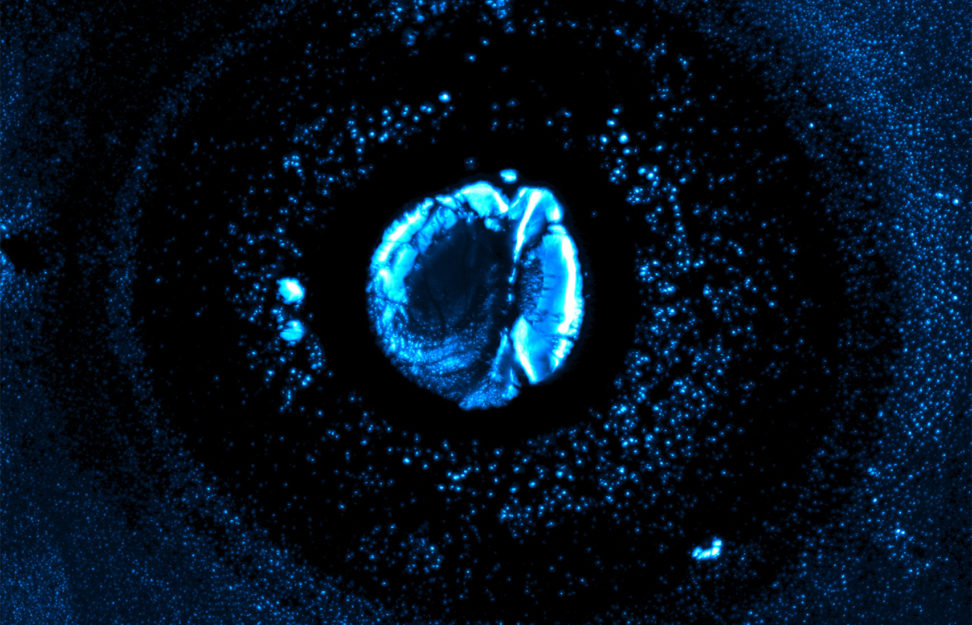Melanoma

Melanocytes are cells that produce pigment to help protect the skin from ultraviolet (UV) radiation or sunlight. These cells can collect together in the skin to form a mole. Melanomas are formed when the melanocytes in a mole begin to grow and divide in an uncontrolled and unregulated way. The cells expand outwards or down into the lower layers of the skin where it grows very quickly if left untreated.
Who is at risk?
There are many risk factors that increase the chances of melanoma, including people with fair skin, a high mole count, family history and a pattern of sunburns throughout life, especially during childhood. However, melanoma can be effectively treated if detected early.
Over the past five years new treatments have emerged for people with advanced melanoma. Centenary is focused on better understanding the resistance of certain melanoma to new treatments.
What are the symptoms?
The most common symptoms of melanoma are:
- A new spot on the skin, or a spot that is changing in size, shape or colour
- Moles that have features of the ABCDE rule: asymmetry, border irregularity, colour, diameter and evolving
- A sore that does not heal
- Itching, scaling, bleeding, oozing, swelling or pain in a mole
- Spread of pigment from a spot into the surrounding skin
Please consult with your doctor if you have any concerns about melanoma.
How is it treated?
Melanoma has many treatment options available depending on the stage of the disease.
The most common treatment for early stage or localised melanoma is surgery, and in the majority of cases, this is the only treatment required.
More advanced cases of melanoma where the cancer has spread to other parts of the body may require treatments such as chemotherapy, radiotherapy, immunotherapy or targeted molecular therapy.
Immunotherapy works by modifying the actions of the immune system to attack the cancer cells. Targeted therapy is designed to specifically attack cancer cells without harming normal cells.
Please consult with your doctor for the best treatment options based on how far the melanoma has progressed together with other factors such as your age and general health.
Our research
At Centenary our research is looking at improving the treatment outcomes in melanoma and potential treatments around a number of areas.
Up to one half of melanoma patients do not respond to immunotherapy and a majority of patients tend to develop acquired resistance to targeted therapies and immunotherapy.
We are particularly interested in the role of epigenetic regulation in resistance and the role of new drugs targeting these mechanisms in treatment of melanoma.
Our approach is to conduct translational research with a focus on resistance mechanisms. We continue to look at methods of improving the landscape of treatments with immunotherapy and other targeted treatments.
Professor Peter Hersey, Head of Melanoma Oncology and Immunology Program leads this research.
To understand how genetics can potentially govern all hallmarks of cancer. We use cutting edge techniques such as CRISPR, high throughput drug screening and experimental models to identify new targets for potential treatments.
Working closely with collaborators we look to identify drugs that can be rapidly screened in the laboratory using our extensive pre-clinical melanoma models. This allows us to study tumour growth, metastases and resistance to therapy.
Professor Peter Hersey, Head of Melanoma Oncology and Immunology Program and Dr Jessamy Tiffen, Head of Melanoma Epigenetic Laboratory lead this research.
Our researchers are exploring a number of genes on the X chromosome, specifically those genes that had been found to escape a cellular process called ‘X-inactivation’.
A normal regulatory process in the body, X-inactivation is where one of a female’s two X chromosomes is inactivated or silenced during embryonic development. Only one functional copy of the X chromosome is required in each body cell.
This ‘silencing’ process is not perfect however with between 10-20% of the genes on the silenced X chromosome are still able to be expressed. As a result of this phenomena females have a double expression of many genes involved in immune responses when compared to males.
We believe that high levels of certain genes aid the body’s immune system in helping to fight cancer.
Dr Jessamy Tiffen, Head of Melanoma Epigenetic Laboratory leads this research.
Our research
At Centenary our research is looking at improving the treatment outcomes in melanoma and potential treatments around a number of areas.
Up to one half of melanoma patients do not respond to immunotherapy and a majority of patients tend to develop acquired resistance to targeted therapies and immunotherapy.
We are particularly interested in the role of epigenetic regulation in resistance and the role of new drugs targeting these mechanisms in treatment of melanoma.
Our approach is to conduct translational research with a focus on resistance mechanisms. We continue to look at methods of improving the landscape of treatments with immunotherapy and other targeted treatments.
Professor Peter Hersey, Head of Melanoma Oncology and Immunology Program leads this research.
To understand how genetics can potentially govern all hallmarks of cancer. We use cutting edge techniques such as CRISPR, high throughput drug screening and experimental models to identify new targets for potential treatments.
Working closely with collaborators we look to identify drugs that can be rapidly screened in the laboratory using our extensive pre-clinical melanoma models. This allows us to study tumour growth, metastases and resistance to therapy.
Professor Peter Hersey, Head of Melanoma Oncology and Immunology Program and Dr Jessamy Tiffen, Head of Melanoma Epigenetic Laboratory lead this research.
Our researchers are exploring a number of genes on the X chromosome, specifically those genes that had been found to escape a cellular process called ‘X-inactivation’.
A normal regulatory process in the body, X-inactivation is where one of a female’s two X chromosomes is inactivated or silenced during embryonic development. Only one functional copy of the X chromosome is required in each body cell.
This ‘silencing’ process is not perfect however with between 10-20% of the genes on the silenced X chromosome are still able to be expressed. As a result of this phenomena females have a double expression of many genes involved in immune responses when compared to males.
We believe that high levels of certain genes aid the body’s immune system in helping to fight cancer.
Dr Jessamy Tiffen, Head of Melanoma Epigenetic Laboratory leads this research.


